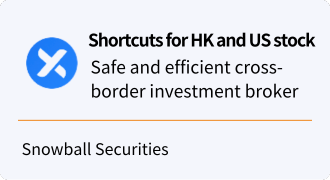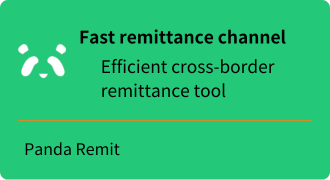Trading Timeframe Guide: Day, Swing & Position Trading Compared
[DISCLAIMER] This article is for educational and informational purposes only and does not constitute investment advice. Readers should consult with qualified financial professionals before making any investment decisions.
In our previous article, we explored the fundamental differences between trading and investing. Now, you've likely decided to try your hand at trading, but face another crucial question: Which trading style should you choose? Should you opt for day trading with its daily entries and exits, swing trading lasting several days to weeks, or position trading extending for months?
As a quantitative trader with over 10 years of market experience, I've seen too many beginners suffer after choosing a trading timeframe that doesn't match their personality. Some people naturally thrive on the excitement of day trading, while others crumble under that pressure. Today, I'll help you find the trading approach that best suits your personality, capital, and lifestyle.
Ⅰ. Trading Timeframes: The Critical Choice That Determines Success
A trading timeframe, simply put, is how long you hold your positions. Think of fishing: some people prefer frequent casting to catch many small fish (day trading), others wait days for bigger fish (swing trading), and some set long lines and wait patiently (position trading).
Choosing the right timeframe is crucial because it affects not just your trading strategy and technical analysis approach, but also aligns with your personality, schedule, and psychological resilience. I once coached a client who tried day trading but kept losing money due to the stress of rapid decision-making. After switching to swing trading, which better matched his calm temperament, he began to consistently profit.
Ⅱ. Day Trading: The Fast-Paced Battlefield
2.1. The Essence and Characteristics of Day Trading
Day trading involves the shortest timeframe, where all trades are opened and closed within the same day—no overnight positions. It's like "hit and run" in financial markets—quick entry, rapid profit-taking, immediate exit.
Day traders typically focus on minute or hourly price movements to profit from short-term price fluctuations. They might complete 5-20 trades daily, holding each position for minutes to hours.
2.2. Who Should Consider Day Trading?
Day trading suits:
- Full-time traders: Those able to monitor markets throughout trading hours
- Quick thinkers: People who can analyze and decide rapidly
- Mentally resilient individuals: Those who handle high pressure and frequent decisions well
- Technical analysis experts: Those skilled with short-term charts and indicators
My friend Jack, a former professional poker player, transitioned perfectly to day trading. He told me: "Day trading is like poker—both require quick decisions with limited information, risk control, and emotional stability." For him, the short timeframe matched his rapid analysis and decisive decision-making abilities.
2.3. Advantages and Challenges of Day Trading
Advantages:
- No overnight risk: Avoids gap risk from major news after hours
- Rapid feedback: Same-day results accelerate learning
- Frequent opportunities: Markets provide numerous daily trading opportunities
- Higher leverage: Many brokers offer increased leverage for day trades
Challenges:
- High stress: Requires extended periods of intense concentration
- Trading costs: Frequent trades lead to higher commission expenses
- Tax complications: Numerous trades create complex tax records
- Time-intensive: Requires full-time market monitoring
2.4. A Day in the Life of a Day Trader
Imagine a typical day trader's routine: Rising at 6 AM to review the trading plan and overnight news; analyzing pre-market movements starting at 7 AM; focusing intensely on charts during trading hours to find entry opportunities; then reviewing all trades after market close, learning lessons, and preparing for the next day.
This high-intensity schedule isn't suitable for everyone. I tried full-time day trading for six months before realizing I was better suited to swing trading's rhythm—the key was understanding myself rather than blindly pursuing an exciting trading style.
Ⅲ. Swing Trading: Riding Market "Waves"
3.1. The Essence and Characteristics of Swing Trading
Swing trading occupies the middle ground between day and position trading, with holding periods typically ranging from a few days to several weeks. Swing traders aim to capture "swings"—price movements from low to high (or high to low).
If day trading is like catching ripples, swing trading is like surfing waves—you don't care about every small ripple, but instead look for substantial waves you can ride successfully.
3.2. Who Should Consider Swing Trading?
Swing trading suits:
- Part-time traders: Those with full-time jobs who still want market involvement
- Balanced personalities: People neither too impulsive nor too conservative
- Disciplined individuals: Those who can create and strictly follow plans
- Moderate risk-takers: People comfortable with market fluctuations lasting days to weeks
My student Michael, a software engineer, can only devote 1-2 evening hours to market analysis and trade management. Swing trading perfectly complements his lifestyle—he conducts market research on weekends, sets trading plans for the week ahead, and then only needs minimal time on weekdays to adjust and monitor positions.
3.3. Advantages and Challenges of Swing Trading
Advantages:
- Part-time viability: No need for constant monitoring, suitable for those with other jobs
- Lower stress: More time for decisions means less pressure than day trading
- Reduced fees: Lower trading frequency means lower costs
- Trend participation: Opportunity to capture medium-term market trends
Challenges:
- Overnight risk: Must accept gap risk from overnight positions
- Patience required: Waiting for ideal entry points may take days
- Higher margin requirements: Longer holding periods typically need more capital
- Psychological challenges: Handling uncertainty over multiple days
3.4. Key Strategies for Successful Swing Trading
Successful swing traders typically focus on daily and 4-hour charts, looking for technical patterns and trend reversal points. They rely more on price action, technical formations, and indicator combinations rather than just short-term fluctuations.
In early 2022, when Bitcoin began falling from $68,000, an excellent swing trader friend didn't try to "catch the bottom" but waited for clear rebound signals. After identifying a bottom formation pattern around $32,000, he entered a long position and later took profits near $38,000, a process that lasted 12 days. This exemplifies typical swing trading thinking—not trying to capture exact tops and bottoms, but confirming trends and following momentum.
Ⅳ. Position Trading: Moving with Major Trends
4.1. The Essence and Characteristics of Position Trading
Position trading involves the longest timeframe, with trades lasting from several weeks to months. Position traders focus on fundamental analysis and long-term technical analysis to capture major market trends.
If day traders watch leaf movements and swing traders observe branch swings, position traders study how entire trees change with the seasons.
4.2. Who Should Consider Position Trading?
Position trading suits:
- Patient individuals: Those who can tolerate long-term market fluctuations
- Strategic thinkers: People skilled at macro analysis and long-term planning
- Emotionally stable personalities: Those not easily influenced by short-term fluctuations
- Well-capitalized traders: People able to withstand significant account fluctuations
A retired banker friend chose position trading because it matched his lifestyle and analytical habits. He spends just 2-3 hours weekly analyzing markets, focusing on weekly and monthly charts with macroeconomic data. He once held a gold long position for 8 months, gaining 30% throughout the uptrend.
4.3. Advantages and Challenges of Position Trading
Advantages:
- Time freedom: No need for frequent monitoring, offering a more relaxed lifestyle
- Reduced stress: Long-term holding eliminates frequent decision pressure
- Larger trends: Opportunity to capture major market trends and substantial profits
- Lower costs: Least frequent trading means lowest overall transaction costs
Challenges:
- Capital requirements: Typically needs more funds to buffer significant fluctuations
- Opportunity cost: Capital tied up in specific markets for extended periods
- Patience requirements: Needs long-term patience for strategy validation
- Drawdown risk: Potential for significant account pullbacks
4.4. Success Factors in Position Trading
Position traders focus on the "forest" rather than individual "trees." They don't adjust strategies based on short-term noise but concentrate on long-term market logic. Technically, they emphasize trendlines, support/resistance levels, and long-term moving averages; fundamentally, they monitor macroeconomic data, policy changes, and industry developments.
After the March 2020 pandemic crash, a successful position trader friend established a substantial S&P 500 index long position after seeing the Fed's unlimited QE policy, holding it for nearly a year and gaining over 70%. His advantage was seeing the long-term logic and having the courage and patience to maintain his analysis.
Ⅴ. How to Choose Your Trading Style: Five Critical Questions
Before deciding which trading style suits you, honestly answer these five questions:
5.1. How much time can you commit?
- Full-time market monitoring → Day trading
- 1-2 hours daily → Swing trading
- Several hours weekly → Position trading
5.2. What personality type are you?
- Enjoy excitement and fast pace → Day trading
- Balanced and adaptable → Swing trading
- Patient and strategic thinker → Position trading
5.3. What's your capital size?
- Smaller funds ($5,000-10,000) → Day or swing trading
- Medium funds ($10,000-50,000) → Swing trading
- Larger funds ($50,000+) → Position trading more suitable
5.4. What's your risk tolerance?
- Prefer quick profits and quick stops → Day trading
- Can handle medium fluctuations → Swing trading
- Can tolerate larger account swings → Position trading
5.5. What are your trading goals?
- Full-time trading for livelihood → Day or swing trading
- Part-time income supplement → Swing trading
- Long-term asset appreciation → Position trading
I recommend beginners start with swing trading because it offers the best balance—neither as stressful and technically demanding as day trading nor requiring the extreme patience and larger capital of position trading. Many successful traders begin with swing trading, then explore other styles based on their adaptability.
Ⅵ. Common Misconceptions About the Three Trading Styles
6.1. Day Trading Misconceptions
- Belief that day trading is easiest for profits: In reality, day trading may have the highest technical and psychological requirements among the three styles. Statistics show over 80% of day traders ultimately lose money.
- Overtrading: The biggest mistake new day traders make is trading too frequently. Remember, not every market day is suitable for trading. Some days have too little volatility, others too much chaos.
- Ignoring trading costs: Commissions, slippage, and spread costs from frequent trading can significantly erode profits. One novice day trader discovered that though his strategy was profitable in backtesting, these costs turned it into a loss in actual trading.
6.2. Swing Trading Misconceptions
- Checking positions too frequently: A key aspect of swing trading is giving trades sufficient time and space. Many swing traders make the mistake of "disguising themselves as day traders"—though they're swing trading, they check positions hourly, often exiting potentially profitable trades prematurely due to short-term fluctuations.
- Ignoring the broader market environment: Successful swing trading requires adapting to current market conditions. Attempting trend trading in range-bound markets or range trading in trending markets often fails.
- Improper stop-loss placement: Swing trading stop-losses should give prices adequate breathing room to avoid triggering from normal market noise. One student consistently set stops too tight, getting stopped out frequently only to watch markets move in his predicted direction afterward.
6.3. Position Trading Misconceptions
- Taking profits too early: The greatest advantage of position trading is capturing long-term trends, but many traders eagerly close positions after 10-20% gains, missing potentially larger returns from continued trends.
- Ignoring fundamental changes: Long-term trading requires close attention to fundamental factors that might alter trends. In 2018, a position trader friend ignored signals of a Fed policy shift, holding long positions throughout a 4-month decline, suffering significant losses.
- Poor capital management: Since position trading involves longer cycles and larger per-trade risk exposure, capital management becomes crucial. Some traders allocate too much capital to single trades, facing serious account damage when markets move unfavorably.
Ⅶ. 2025 Trading Environment Outlook: Opportunities and Challenges
As market environments evolve, different types of traders face new opportunities and challenges:
7.1. Day Traders:
- Challenges: Increased competition from algorithmic and high-frequency trading systems
- Opportunities: Greater market volatility creating more short-term trading opportunities
- Strategy adjustments: Need for greater focus on specific markets and timeframes, utilizing technological tools to optimize trading efficiency
7.2. Swing Traders:
- Challenges: Increased short-term sentiment volatility from social media and algorithms
- Opportunities: Medium-term fluctuations from macro uncertainties providing more swing opportunities
- Strategy adjustments: Combining technical and fundamental analysis, focusing on sentiment indicators and fund flows
7.3. Position Traders:
- Challenges: Accelerating structural economic changes reducing long-term trend persistence
- Opportunities: Emerging industries and asset classes offering long-term growth potential
- Strategy adjustments: Greater emphasis on sector rotation and asset allocation, regular reassessment of long-term positions
I anticipate continued increased market volatility in 2025, particularly benefiting swing traders. Simultaneously, evolving global monetary policies and geopolitical environments offer position traders opportunities to capture major trends.
Ⅷ. Professional Trader's Toolbox: Essential Tools for Different Trading Styles
Successful trading requires not just the right strategy but appropriate tools:
8.1. Day Trading Essential Tools:
- High-speed, stable trading platforms (ThinkOrSwim in the US, Futu or Tiger Brokers in China)
- Real-time market depth data
- Multi-monitor setup
- Hotkey configuration
- Price alert systems
8.2. Swing Trading Essential Tools:
- Multi-timeframe chart analysis tools
- Technical indicator combinations (like MACD, RSI, moving averages)
- Market scanners (for finding potential trading opportunities)
- Risk management calculators
- Trading journal systems
8.3. Position Trading Essential Tools:
- Fundamental analysis resources
- Economic calendars
- Long-term trend identification indicators
- Portfolio management software
- Market correlation analysis tools
Regardless of which trading style you choose, I recommend practicing with a demo account for at least three months before trading with small real capital. Remember, trading is a skill requiring time to develop—don't expect overnight success.
Ⅸ. Where to Go From Here: Your Next Trading Learning Path
Having understood the basics of trading timeframes, your next step is deepening your knowledge of specific trading operations and terminology. In our next article, I'll thoroughly explain key trading terms: bid price, ask price, spread, leverage, and margin. These concepts form the foundation for any type of trading, and mastering them will help you calculate trading costs and risks more accurately.
Have you formed an initial judgment about which trading style might suit you best? Is it fast-paced day trading, balanced swing trading, or strategic position trading? Please share your thoughts and questions in the comments section.
If you have more in-depth questions about specific trading styles, please let me know in the comments, and I'll address them in future articles. Remember, finding a trading style that suits you is more important than blindly pursuing what's popular or seems most profitable. The key to successful trading lies in understanding yourself and choosing an approach that best matches your personality, time availability, and resources.







